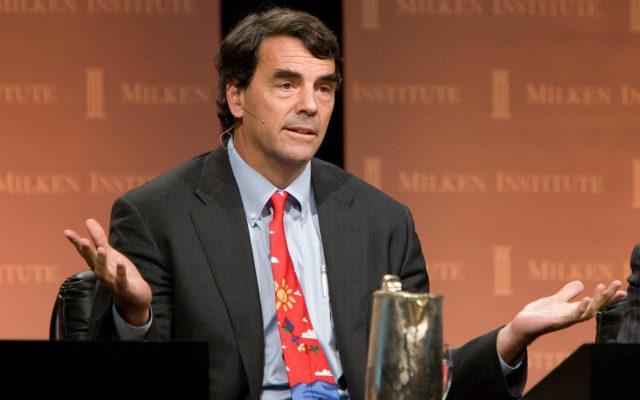- The dollar fell more than 1.5% on Tuesday, its worst result in more than a year.
- Operators consider that the Dollar is strengthening again after the retail sales data.
- The Dollar Index tries to recover part of the losses and is back above 104 points.
He US dollar (USD) is operating in a new reality Wednesday as it tries to regain confidence by at least trying to recoup some losses. October’s lower-than-expected Consumer Price Index (CPI) numbers sparked a tectonic shift across all asset classes in financial markets: Stocks soared, commodities rose, bond yields They rebounded and, in the foreign exchange market, the Scandinavian and Central and Eastern European (CEE) currencies were the big beneficiaries from the loss of the Dollar.
The calendar for this Wednesday developed as expected: expectations were too high after the weak positive CPI figure. The rebound in retail sales and the maintenance of the PPI figures do not add more fuel to Tuesday’s repositioning. The Dollar Index (DXY) is expected to continue its recovery now, as traders prepare for any news from San Francisco, where US President Joe Biden will meet with Chinese President Xi Jinping.
Daily summary: The dollar tries to regain control
- The deadline for approval of the US budget is November 17. Sentiment was boosted on Tuesday by rising hopes that a US government shutdown will be avoided.
- US President Joe Biden will meet with Chinese President Xi Jinping on Wednesday at the historic Filoli estate south of San Francisco.
- Wednesday’s agenda begins with the publication of weekly mortgage applications from the Mortgage Bankers Association (MBA), which increased 2.8% last week.
- Around 13:30 GMT, the New York Empire State Manufacturing Index for the month of November was released, firmly exceeding expectations, going from -4.6 to 9.1.
- Around 13:30 GMT a large amount of data was published:
- The Production Price Index (PPI):
- The monthly general PPI went from 0.4% to -0.5%.
- The monthly underlying PPI went from 0.2% to 0.0%.
- The annual general PPI went from 2.2% to 1.3%.
- The annual underlying PPI went from 2.7% to 2.4%.
- Retail sales figures in the United States:
- The monthly figure for October went from an upwardly revised 0.9% to -0.1%.
- The figure for the retail sales control group went from 0.7% to 0.2%.
- The Production Price Index (PPI):
- At around 15:00 GMT, September business inventories are expected to remain stable at 0.4%.
- Actions resume the enthusiasm of Tuesday. The Hang Seng is the biggest gainer, up more than 3%. In Europe, all major European indices are approaching 1%, while US stock futures are only slightly up.
- CME Group’s FedWatch tool shows that markets are pricing in 94.5%, up from 85.7% Tuesday morning, at the chance that the Federal Reserve will keep interest rates unchanged at its December meeting.
- The 10-year US Treasury yield is trading at 4.49%, down significantly from 4.64% on Monday.
Dollar Index Technical Analysis: The Dollar Is Not KO Yet
The US Dollar recorded its worst intraday performance in over 52 weeks, with the Dollar Index (DXY) depreciating more than 1.50%. However, traders should be vigilant as the dollar could put up a fight. Hopes for inflation to fade further are high ahead of the Producer Price Index (PPI) data, so the odds are in favor of the Dollar to at least erase some of Tuesday’s losses in the DXY.
The DXY is stopping around the 100-day SMA near 104.15. A bounce is expected from there, with 105.29, the Nov. 6 low, being the market that DXY should try to close above this week. From there, the 55-day SMA at 105.71 is the next bull market that bulls need to rally before they start thinking about further US dollar strength.
Traders were warned that when the Dollar Index fell below the 55-day SMA, a large air pocket would open that could cause a substantial drop in the DXY, which materialized on Tuesday. For now, the 100-day SMA tries to hold, although at 103.61, the 200-day SMA is a much better candidate to look for support. If this level were to be broken substantially, a long-term sell-off could begin, with the DXY falling between 101 and 100 points.
Frequently asked questions about interest rates
What are interest rates?
Financial institutions charge interest rates on the loans they grant to borrowers and on the interest they pay to savers and depositors. They are influenced by base lending rates, which are set by central banks in response to changes in the economy. Central banks are typically mandated to ensure price stability, which in most cases means targeting an underlying inflation rate of around 2%.
If inflation falls below target, the central bank can cut base lending rates, with a view to stimulating credit and boosting the economy. If inflation rises substantially above 2%, the central bank usually raises base interest rates to try to reduce it.
How do interest rates influence currencies?
Higher interest rates often help strengthen a country’s currency by making it a more attractive place for global investors to park their money.
How do interest rates influence the price of Gold?
In general, higher interest rates influence the price of Gold because they increase the opportunity cost of holding Gold instead of investing in an interest-bearing asset or depositing cash in the bank.
If interest rates are high, the price of the United States Dollar (USD) usually rises and, since gold is priced in dollars, the price of Gold falls.
What is the Federal Funds rate?
The Fed funds rate is the overnight rate at which U.S. banks lend to each other. This is the main rate that the Federal Reserve usually cites at its FOMC meetings. It is set in a range, for example 4.75%-5.00%, although the upper limit (in that case 5.00%) is the quoted figure.
Market expectations about the future Fed funds rate are tracked by CME’s FedWatch tool, which determines how many financial markets behave in anticipation of the Federal Reserve’s future monetary policy decisions.
Source: Fx Street
I am Joshua Winder, a senior-level journalist and editor at World Stock Market. I specialize in covering news related to the stock market and economic trends. With more than 8 years of experience in this field, I have become an expert in financial reporting.







